Tokyo Mourning Becomes Electra
A city is a story, suggests Roland Barthes, one that is narrated through its streets and signs. Although its literary qualities may escape us in our daily commute, Tokyo is a fluid and flexible environment despite its steely, concrete façade. As we gaze at billboards, ride the trains, and enter convenience stores, we create our own private version of Tokyo and live the story of our lives. However, as we know from daily experience, this creative interaction usually escapes us and the city, in its unchanging concrete existence, seems more like a vessel in which we fill its empty spaces. Only when something unusual happens are we suddenly awakened from the lull of daily routine and realize what we thought we understood was in fact something very different.
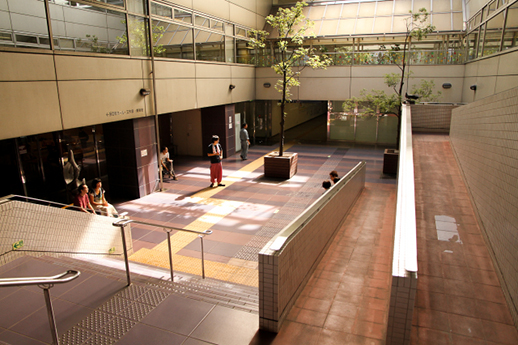
For Kaku Nagashima, the director of “The House of Atreus”, this came with the Tohoku earthquake on March 11. In the wake of the disaster he, like many other Tokyo-ites, saw his “normal” destroyed, resulting in power shortages, difficulty in obtaining basic food items, contaminated water, and more. He also saw how public space easily turned into private space, as a variety of schools and public places became temporary shelters both for people without a train to go home, and also those without the home to go home to.
These impressions gather and form the backbone of “The House of Atreus”. This project, presented by the Tokyo Culture Creation Project and NPO Arts Network Japan, is ostensibly a theatrical “performance”, albeit one lacking a distinct plot, performers, or even a stage. Held at a public-run culture center near Ikebukuro, it aims to question the conventional separation between public space and private space, while allowing participants to actively imagine and create a story based on their surroundings.
The “performance” started at two p.m. but the story itself began separately for each participant. Upon check-in, everyone received a key with a number and was navigated to an assigned room. This was dimly lit and partitioned into little numbered cubicles furnished with a cushion, blanket, and placard that read: “Make yourself at home. Once a family lived here.” From here commenced everyone’s brief, two-hour “life” spent inside the Toshima Art Station Z.
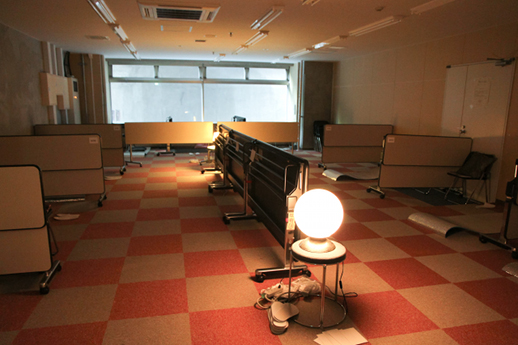
The family mentioned in the placard is that of Electra, a heroine of Greek tragedy who, we are told, once lived in this very culture center with her family. (The actual narrative of the classical play is hardly relevant.) The participants are given short snippets and snap shots of information about each character and plot point in little white leaflets scattered around the room. Naturally, everybody picks up and reads each one, trying to form some sort of story in their heads. Aside from the fact that each leaflet begins with the same sentence, there is no apparent connection between the stories and even after picking up and reading all of the booklets, a participant is most likely left only with a vague understanding that Electra’s family came from somewhere, spent a long time here, and then continued on to somewhere else.
However, once you leave the room and begin exploring the culture center, you come to realize that your understanding of the place has changed. You look around the kitchen area in the little rest space, the stairs leading up to the road outside. You see a girl sitting on a bench and immediately think of Electra. Although the story is experienced solely in the mind of each participant, the culture center itself turns into an active “stage” where the Greek heroine walks around as an imagined ghost.
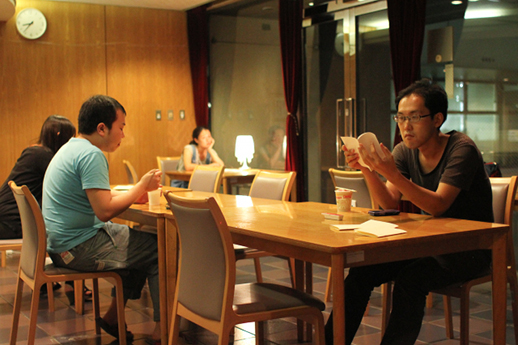
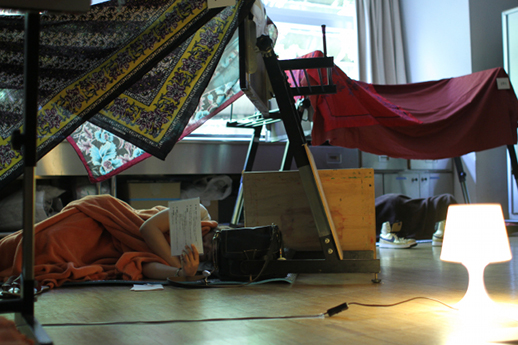
In addition to this experience of “remembrance”, we are suggested to make a home out of the center ourselves. In addition to the story of Electra, the participants themselves create their own stories through residing and staying at the culture center. Although uncomfortable at first, people gradually adapted to the new rules of conduct and started lounging in the rest space, reading magazines and comic books, eating cup noodles, and even taking short naps in their cubicle. This transformed the original public nature of the facility into a highly private one, allowing each person to reflect on the notions of that dichotomy, as well as to experience a certain pleasure in breaking out of daily norms.
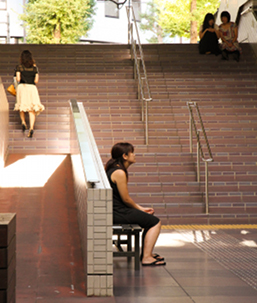
A culture center is not built for people to reside in — it has its own function and raison d’etre. Despite the two-hour stay and Electra’s narrative, the center is essentially public in nature, constructed to promote and support cultural activities in the area. Similarly, our personal stories aside, Tokyo has a narrative of its own: with its glittering lights, twenty-four-hour restaurants, and well-developed train system, the metropolis suggests the narrative of a sci-fi utopia founded on technological advancement and convenience. This “story” was a longtime favorite among Tokyo-ites as well; there was a certain belief and pride in Tokyo’s modernity. But the earthquake shook the story into a new chapter.
In “The House of Atreus”, Electra frequently recalls her past house with nostalgia and wishes she could go back again. However, Electra is no longer at the center, her tragedy has moved on. Electra’s brother came back, and killed their mother and her lover. This makes us wonder: where and to what end is the story of “Tokyo” moving on to — a tragedy or another reconstructed utopia? Whatever the next page may bring us, one thing we know for sure is that our past “house” is long gone and there is no going back home anymore.
To learn more about “The House of Atreus” and its related projects, please see the website:
http://thoa.gr/
Chisako Izuhara
She was always interested in people. Chisako escaped her mother’s womb in 1990 but only entered the real world in 2008 upon starting school in Tokyo. There she found herself amidst a crowd of crazy people, ideas, and action which made her want to learn more about them. Studying a variety of subjects in school ranging from the history and philosophy of science to Buddhism, her schedule book is always full with various art exhibits and events. The vibrant Tokyo art scene always keeps her busy but she also likes to relax at her favorite cafe and drink coffee while reading a book on travel. See other writings
Tokyo Culture Creation Project
Tokyo Culture Creation Project



